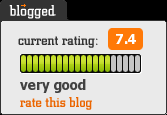The A.C.R.L. hands down decrees, educational programs, and the results of comprehensive studies as a way of informucating its constituents, members, adulants (rah libraries!). In 2000, A.C.R.L. dropped the Information Literacy Competency Standards, which was followed shortly by 2001's Objectives for Information Literacy Instruction. Both programs are watershed documents of the Histoire General concerning Academic Libraries foray into Information Literacy in the U.S; both come together like Voltron, or like the atria and ventricles of each member of the 36 chambered Wu Tang Pantheon, or like double-A batteries in a walkman (what the fuck is a walkman).
The Objectives are like the innards of the Competency Standards (CS), and the CS act as a hull for the work that goes on in teaching the Objectives. It's all very modular and logical and you can tell that a lot of time was put into both Information Literacy programs. The A.C.R.L. writes that, "The Competency Standards are the basis for the IS Objectives and it is recommended that the two documents be used together. The IS Objectives flesh out and make more specific the Standards, Performance Indicators, and Outcomes of the Competency Standards” (2008, "Objectives..."). The CS came before the Objectives, that is why it is useful to plan using both: the CS provide a framework with which to pursue individual Objectives.
A.C.R.L. writes that, "one or two objectives may be employed in a 50-minute 'one-shot' class and a related assignment. A librarian working with an instructor to develop a course that infuses information literacy instruction into its content may select several objectives. An information technology staff person may collaborate with a librarian to incorporate some of the objectives into campus IT workshops. Many or all of the objectives may be adopted in a comprehensive program of instruction for information literacy or in a Web-based tutorial. Thus the IS Objectives may be used in part or whole. They expand upon the Competency Standards" (2008, "Objectives...")
Another way of looking at it might be to say that the CS are behaviors that librarians perform consciously, as conductors of Information; the Objectives are the teachable moments I capitalize on every time I sit down with a student and teach them the advantages of controlled vocabulary searches over keyword searches, or ask them to infer/deduce/rank the records that a database retrieves, or show them how to cut a large portion of text and paste it into another document using quick keys, or explain the difference between .com,.org,and .edu, or the difference between http, https, and www. To the intrepid librarian who would like to use these documents in a concrete, non-theoretical way, I advise the following fast-food praxis, only to be performed with drive-thru gusto.
The first thing I would do if I were going to devise a program for instruction of Information Literacy is hone in on two Competency Standards I think will solve my Information Need. Then, I would pick at least two Objectives from each of the Standards and write a lesson plan; this would give me at least four lesson plans which you can teach in "one-shot" (2008, "Objectives...")lessons, or compact the four into two, etc. What I am advocating is that Information Literacy instructors take advantage of the modular nature of the CS and Objectives. Last, I would assess the result of my instruction using the CS as criteria because they are the overarching, general, benchmarks/hallmarks/landmarks while the Objectives are the surgical, arterial, microscopic.
Spicaresque:
A Spanglish blog dedicated to the works, ruminations, and mongrel pyrotechnics of Yago S. Cura, an Argentine-American poet, translator, publisher & futbol cretin. Yago publishes Hinchas de Poesia, an online literary journal, & is the sole proprietor of Hinchas Press.
Subscribe to:
Post Comments (Atom)

.png)

No comments:
Post a Comment